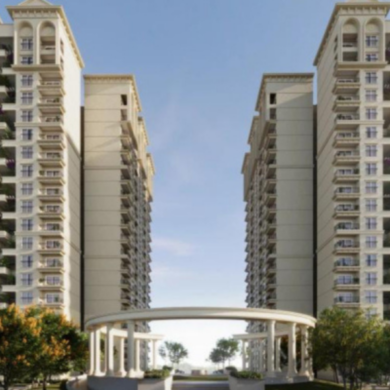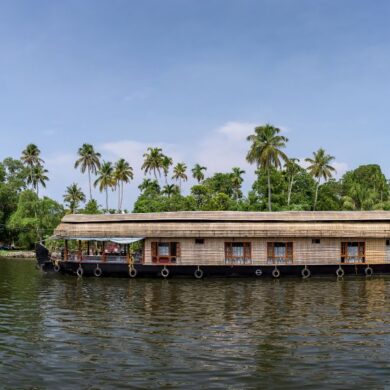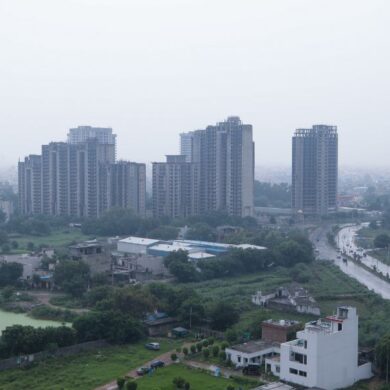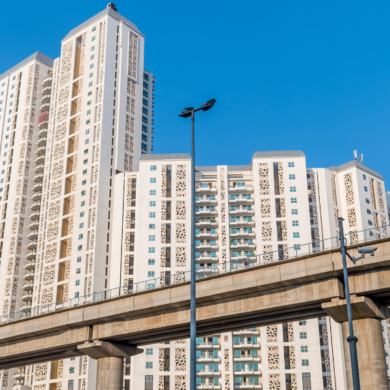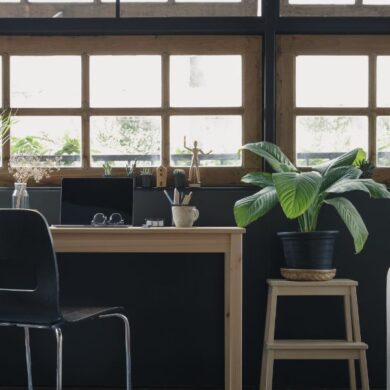IT, Startups, and Real Estate: Mapping Pune’s Workforce Stories to Residential Demand
October 11th, 2025

Explore how Pune IT workforce residential demand is reshaping housing prices, preferences, and lifestyle patterns across the city in 2025.
Pune’s transformation into one of India’s top real estate markets is inseparable from its flourishing technology and startup ecosystem. The city now accounts for 16% of total housing sales among India’s top 7 cities, according to the Anarock Q2 2025 report. This sustained momentum reflects how Pune IT workforce residential demand continues to drive housing absorption through consistent employment growth.
The city is home to global IT giants like Infosys, Cognizant, and TCS – alongside a growing base of new-age startups across fintech, SaaS, and clean-tech. This strong Pune startup ecosystem housing network drives growth in employment and homeownership. Major hubs such as Rajiv Gandhi Infotech Park (Hinjawadi) and EON IT Park (Kharadi) collectively employ over 400,000 professionals, many of who form the city’s largest homebuying and rental base.
Most of these professionals are 25-40 years of age, and prefer convenience & connectivity. With strong social infrastructure, rising salaries, and modern lifestyle, Pune has steadily emerged as a self-sustained urban economy – one that appeals equally to homebuyers, investors, and NRIs.
Table of Contents
Employment-driven Housing Demand Dynamics
The city’s housing story now mirrors its workforce evolution. While IT corridors draw mid- to higher-income homebuyers, startup zones drive rental and co-living absorption. Developers and investors have quickly recognised how Pune IT workforce residential demand influences both design and pricing, prompting purpose-built projects that reflect workforce aspirations.
-
IT Workforce Housing Preferences
Location remains paramount for tech professionals. Areas such as Hinjawadi, Wakad, Baner, and Kothrud consistently dominate due to proximity to tech campuses, highway links, and expanding metro connectivity. The upcoming Hinjawadi-Shivajinagar metro line has been a key factor behind this westward demand shift, further fuelling Pune IT workforce residential demand across the western corridor.
Buyer budgets range between ₹80 lakh and ₹1.5 cr, with preference for 2 and 3BHK configurations. Homes with WFH spaces, high-speed internet, fitness zones, and proximity to childcare centres are highly rated. Luxury gated communities that combine work-life convenience with social spaces are in high demand – reflecting how professionals view housing as an investment in both productivity and wellness.
-
Startup Ecosystem Housing Trends
At the Pune Startup Expo 2025, Maharashtra Minister Ashish Shelar praised Pune’s vibrant startup ecosystem, emphasising the need for decentralised platforms to support grassroots innovation and equal access for urban and rural entrepreneurs.
Nurtured under the Maharashtra Startup Policy, this ecosystem has further diversified Pune’s economic fabric. The city now hosts over 3000 active startups, with venture capital funding flowing into areas such as Baner, Balewadi, and Viman Nagar. This influx of innovation-driven employment complements Pune IT workforce residential demand, creating a synergistic growth pattern where both sectors fuel housing absorption across emerging localities.
The startup segment brings a contrasting yet complementary demand pattern. Younger employees and entrepreneurs prioritise flexibility – opting for rentals and shared living near coworking hotspots. Supported by the presence of innovation labs and incubators, co-living developments across Baner, Balewadi, and Koregaon Park have seen rising occupancy. 1 or 2 BHK units between ₹40 lakh and ₹70 lakh, located within travelling distance of cafes, coworking spaces, and nightlife locales are preferred by IT professionals Pune real estate.
-
Senior Professional Housing Choices
Seasoned professionals and CXOs display a different preference – focusing on permanence, privacy, and value preservation. Localities like Kothrud, Aundh, Kharadi, Viman Nagar, and Magarpatta draw these homebuyers with larger 3-4 BHK layouts, premium finishes, and proximity to leading schools.
These purchases signify a lifestyle upgrade or legacy planning for families. Luxury flats in Pune account for 35% of active housing inventory – an outcome influenced by Pune IT workforce residential demand and the maturity of professional buyers.
Geographic Distribution of Tech Workforce
IT startups driving Pune residential demand are concentrated along the city’s western, eastern, and emerging southern corridors – each defined by connectivity and corporate growth.
-
Hinjawadi IT Corridor
This remains the city’s largest tech hub and the epicentre of employment-led housing demand. According to CREDAI Pune, localities such as Wakad, Baner, Balewadi, Tathawade, and Aundh – linked to Hinjawadi-Shivajinagar metro line – have recorded 300% surge in sales of premium homes (priced at ₹1-2 cr) since 2021.
This rise highlights how infrastructure upgrades and transit expansion shape Pune IT workforce residential demand, as improved connectivity draws professionals towards well-planned areas offering shorter commutes and better urban facilities.
Developers are now introducing sustainable, mixed-use projects that combine residential, retail, and office zones – aligning with the lifestyle of mid- to high-income professionals.
-
Kharadi and Viman Nagar
Eastern Pune, led by EON IT Park and World Trade Centre, has evolved into the city’s cosmopolitan business district. Home prices in Kharadi range between ₹10,000 and ₹12,000 per sq ft, supported by high migration and developer confidence. Neighbouring Viman Nagar benefits from proximity to the international airport and international schools, making it a preferred destination for NRIs and senior executives.
Rising absorption has encouraged developers to launch eco-luxury projects and wellness-driven homes, reflecting how Pune IT workforce residential demand is now rooted in global standards and lifestyle expectations.
-
Emerging Tech Hubs
The next wave is visible in Hadapsar, Tathawade, Balewadi High Street, and Mahalunge – where new commercial spaces and coworking spaces are driving residential growth. These belts may witness 10-15% increase in annual housing demand, driven by diverse pricing and hybrid work culture.
These emerging areas will soon mirror the success of Hinjawadi and Kharadi, offering exclusivity and connectivity. For early investors, they embody the future-ready spirit of Pune tech workforce housing preferences.
Workforce Demographics and Housing Preferences
Pune’s real estate landscape mirrors its demographic transition. Most buyers are aged 25-40, belong to dual-income households, and work in IT or startup environments. This segment is digitally savvy, eco-conscious, and willing to pay a premium for convenience – which continues to strengthen Pune IT workforce residential demand across emerging and established areas.
Mid-premium (45%) and high-end (33%) projects together comprise a clear majority of the city’s launches. Amenities such as gyms, jogging tracks, and coworking lounges drive purchase decisions, while families value children’s play areas, senior citizen spaces, and proximity to schools & hospitals.
Pune tech workforce housing demand is supported by diverse prices, rising incomes, and strong employment-led housing trends – compared to cities like Bangalore or Mumbai.
Rental vs Ownership Trends in Tech Community
Pune’s dual-tenant and ownership ecosystem remains one of India’s most balanced. The rental market thrives due to job mobility, while homeownership rises with career stability. Rental yields average 3-4% annually in Hinjawadi, Wakad, and Kharadi – higher than in Delhi NCR or Mumbai. Pune IT corridor residential growth is characterised by young professionals renting 1-2BHK units near their offices, and families transitioning to homeownership within 5-7 years.
Impact on Residential Project Development
Luxury gated communities address the lifestyle needs of Pune’s IT and startup workforce. These projects now include coworking pods, EV charging stations, children’s play areas, and leisure amenities. Developers are focusing on quality and engineering consistency, rather than volume launches.
Upcoming developments within 30-40 mins of tech parks feature well-planned layouts catering to the hybrid work generation. The shift towards sustainability and efficient design illustrates how Pune IT workforce residential demand is reshaping urban architecture into globally benchmarked living spaces.
Salary Growth and Housing
According to Aon’s 2025-26 Salary Increase and Turnover Survey, average salaries in India are projected to rise by 9% in 2026. The increase in incomes is strengthening Pune IT workforce residential demand, particularly in the upper income segment.
1-3% quarterly price rise is expected across Hinjawadi, Wakad, and Kharadi – indicating sustainable appreciation. With lower attrition rates and expanding professional stability, the workforce will drive consistent homeownership growth through 2026, reinforcing Pune’s position as one of the most resilient residential markets in the country.
Transport and Connectivity Influence
Infrastructure remains an important growth lever. Hinjawadi-Shivajinagar line (23km, 23 stations) and Vanaz-Ramwadi line of Pune Metro are set to transform mobility and elevate housing demand.
Pune Ring Road, connecting 29 villages around the city, may decentralise housing demand towards southern localities such as Undri and Pisoli. Corporate shuttle systems, shared mobility, and expressway connectivity have further bridged the gap between workplaces and residences.
For buyers, proximity to transport infrastructure has become an indicator of capital appreciation potential, making it a key driver behind Pune IT workforce residential demand and sustained price momentum.
Coworking and Work-from-Home Impact
Flexible work models have reshaped how the city’s professionals evaluate housing. Hybrid employees prioritise layouts with study corners, natural ventilation, and rooms that can double up as home offices. Areas such as Baner, Balewadi, and Kothrud illustrate Pune IT workforce residential demand for flexible yet premium living spaces. The trend also mirrors tech workforce housing preferences Pune, where hybrid employees seek homes that seamlessly combine work and leisure.
Future Workforce and Housing Projections
As per a 2025 report by Anarock, the city’s employment base is expected to expand 10-12% annually till 2026 – leading to robust housing absorption in mid-premium and high-end segments. Capital appreciation is projected to average 5-7% annually, while rental yields will remain steady.
Infrastructure projects like PMRDA Ring Road and Airport Phase II will extend housing corridors towards Lohegaon, Charholi, and Wagholi. This expansion aligns with Pune IT workforce residential demand, and supports diverse buyer profiles ranging from first-time owners to NRI investors.
SOBHA’s Response to Professional Housing Needs
SOBHA Nesara in Kothrud enjoys seamless connectivity to Hinjawadi and other major areas, exemplifying how SOBHA’s flats for sale in Pune align with Pune IT workforce residential demand.
This luxury gated community features premium amenities catering to modern work-life integration – such as Clubhouse, Swimming Pool, Gym, Coworking Space, Multi-activity Lawn, Jogging Track, Sensory Garden, Children’s Play Area, Climbing Wall, Putting Green, Cricket Pitch, Multipurpose Hall, Badminton Court, Jacuzzi, Steam & Sauna.
SOBHA’s unique, industry-first backward integration model ensures unmatched control on quality and timelines, from design to delivery. For professionals and families seeking stable, high-value homes, SOBHA Nesara continues to define the benchmark for aspirational living in Pune’s evolving real estate landscape. To know more, visit the official website or call 08046464500.
Conclusion
The city’s evolution into one of the global technology hubs is reflected in its real estate landscape. Steady job creation, infrastructure growth, and income stability continue to fuel Pune IT workforce residential demand. Developers are crafting homes that blend productivity, family life, and sustainability into cohesive urban experiences. With a robust base of tech and startup professionals, and developers like SOBHA meeting evolving expectations, Pune stands as a prime example of how employment quality and housing innovation can co-create a resilient market.
FAQs
How is the Pune IT workforce residential demand influencing the city’s real estate growth?
Pune IT workforce residential demand is influencing the city’s real estate growth with expanding tech parks, steady employment, and metro connectivity – in areas such as Hinjawadi, Baner, Undri, Kharadi, Kothrud, and more.
Why is Pune a preferred city for IT professionals and startup employees to buy homes?
Pune is a preferred city for IT professionals and startup employees to buy homes, due to large tech parks, gated community amenities for all age groups, and diverse pricing compared to metros such as Mumbai. The city’s infrastructure, job density, and lifestyle quotient continue to attract both buyers and long-term tenants.
What role do startups play in shaping Pune’s housing trends?
Startups play an important role in shaping Pune’s housing, such as influencing new-age residential formats such as co-living and studio apartments. With over 3000 startups thriving in the city, demand for flexible rentals near coworking hubs such as Baner and Kharadi continues to grow.
Which localities are witnessing the highest tech workforce housing preferences in Pune?
Localities witnessing the highest tech workforce housing preferences in Pune are Hinjawadi, Wakad, Kothrud and Kharadi – due to strong connectivity, presence of luxury gated communities, metro expansion, and modern infrastructure.
What makes SOBHA projects suitable for Pune’s IT and startup workforce?
SOBHA projects are suitable for Pune’s IT and startup workforce, due to amenities that enhance work-life balance, well-designed luxury homes, and world-class quality – all of which meet the aspirations of Pune’s modern professionals.

